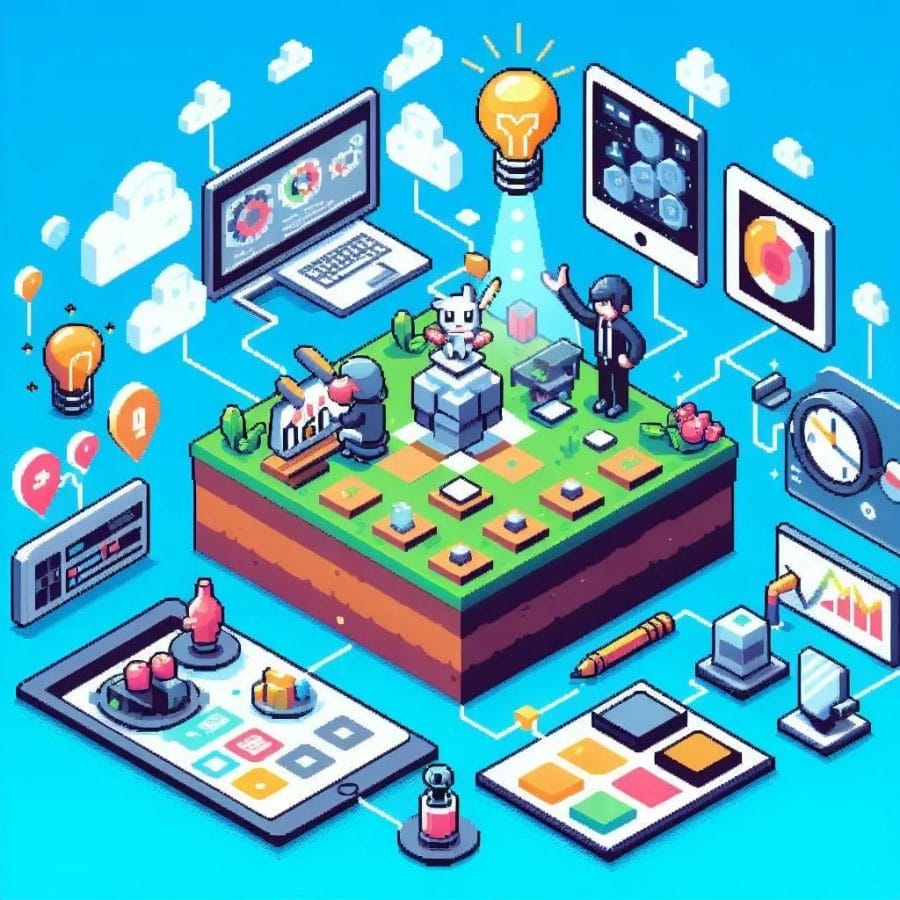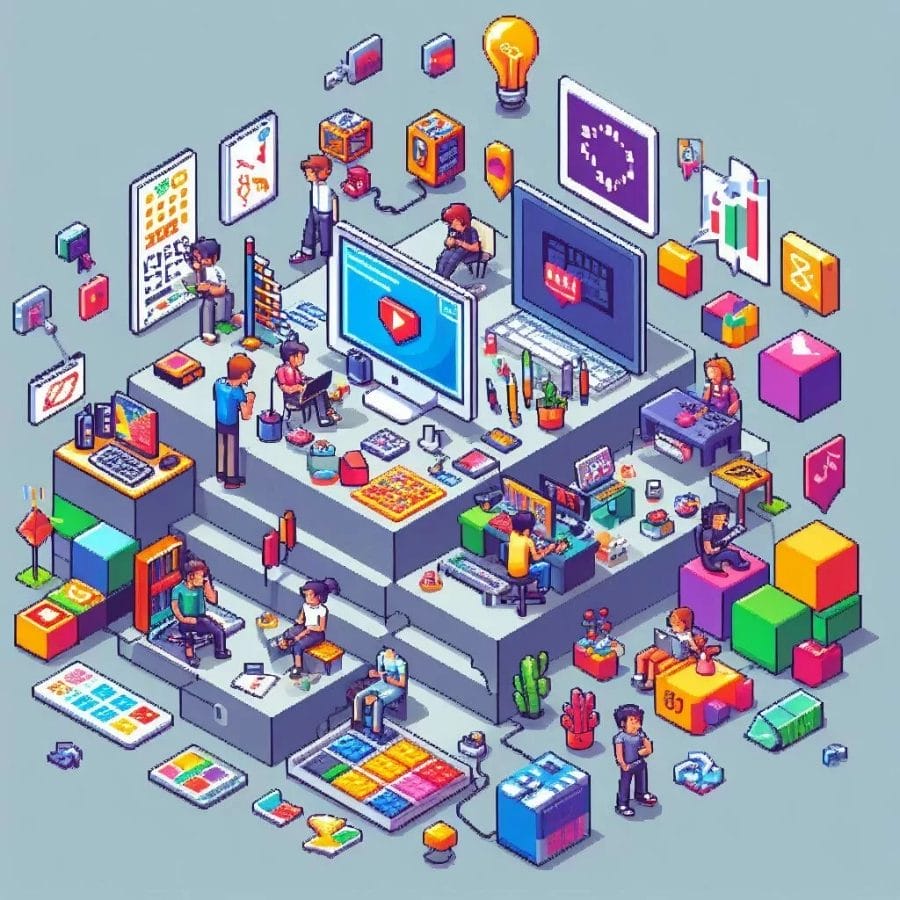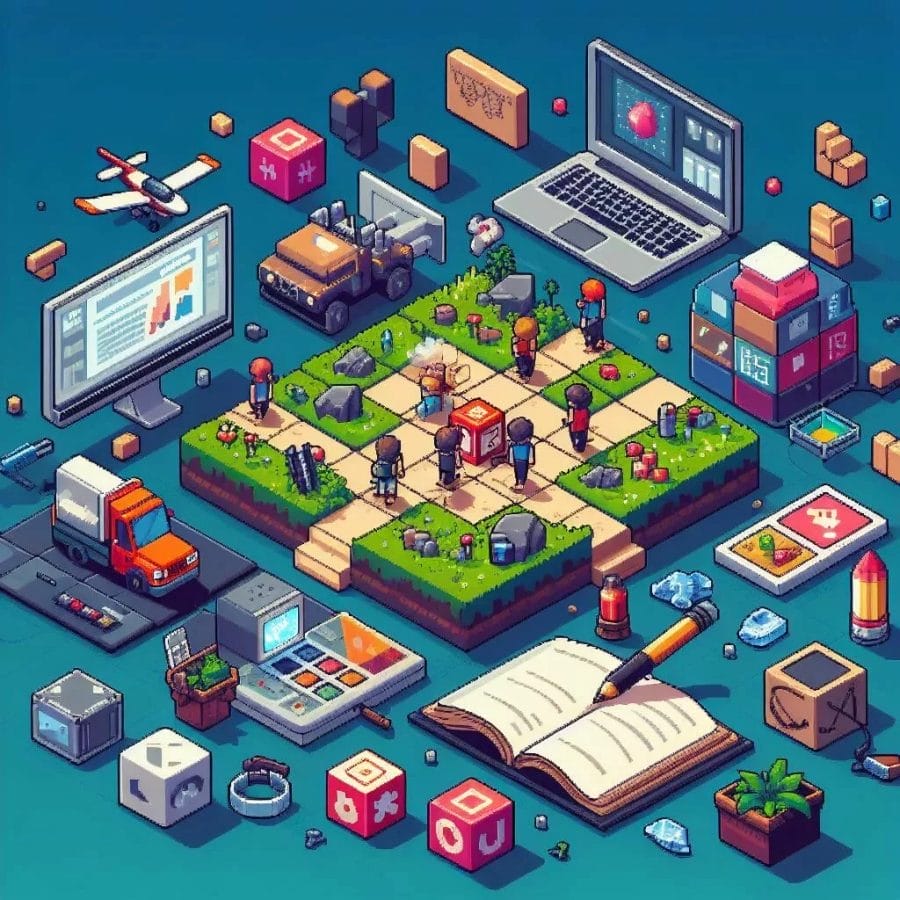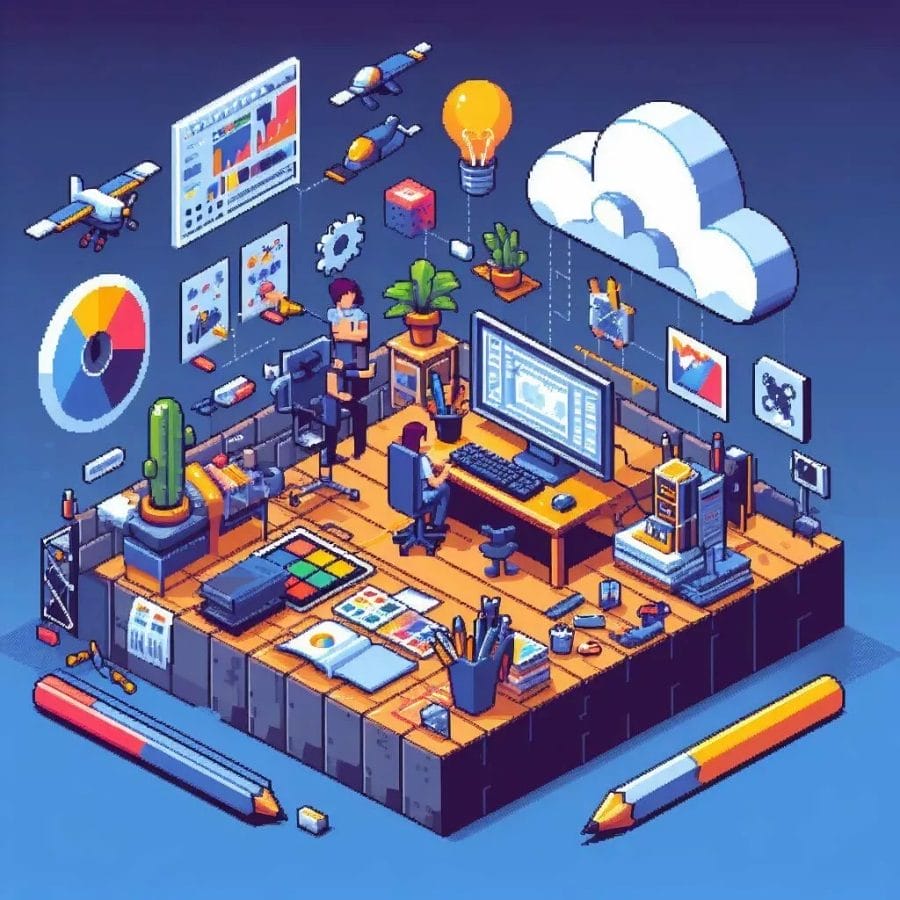
The Rise of Indie Game Design Introduction
Indie game design refers to the creation of video games by independent developers or small teams, without the financial backing or support of a major game publisher. In recent years, indie game design has experienced a significant rise in popularity and recognition within the gaming industry. This growth can be attributed to several factors, including the accessibility of game development tools, the rise of digital distribution platforms, and the increasing demand for unique and innovative gaming experiences.
The impact of indie game design on the gaming industry cannot be overstated. Indie games have brought fresh ideas and unique perspectives to the table, challenging the conventions of mainstream game design. They have pushed boundaries, experimented with new gameplay mechanics, and explored unconventional themes and narratives. This has not only revitalized the industry but also inspired larger game studios to take risks and think outside the box.

The Importance of Creativity in Indie Game Design
One of the key factors that sets indie games apart from mainstream games is their emphasis on creativity. Indie game designers have the freedom to explore their own ideas and visions without the constraints imposed by publishers or market demands. This creative freedom allows them to take risks, experiment with new gameplay mechanics, and create unique gaming experiences that resonate with players.
Creative thinking is essential in game design as it allows designers to come up with innovative solutions to problems and challenges. It enables them to think outside the box and find new ways to engage players. By incorporating creative elements into their games, indie developers can create memorable experiences that stand out in a crowded market.
There are numerous examples of creative indie games that have made a significant impact on the gaming industry. Games like “Braid,” “Journey,” and “Undertale” have received critical acclaim for their innovative gameplay mechanics, thought-provoking narratives, and unique art styles. These games have demonstrated that creativity is not only important in indie game design but also a driving force behind its success.

The Role of Inspiration in the Creative Process of Indie Game Design
Inspiration plays a crucial role in the creative process of indie game design. It is the spark that ignites the imagination and fuels the creation of new ideas and concepts. Indie game designers find inspiration from a variety of sources, including other games, movies, books, art, and real-life experiences.
Inspiration can come from anywhere and at any time. It can be a fleeting moment of insight or a gradual accumulation of ideas over time. Regardless of its source, inspiration is what drives indie game designers to create something unique and meaningful.
Staying inspired throughout the game design process is essential for maintaining creativity and motivation. Indie game designers often face challenges and setbacks that can dampen their enthusiasm. By seeking out new sources of inspiration, whether it be through research, exploration, or collaboration with others, designers can keep their creative juices flowing and overcome obstacles.

The Art of Storytelling in Indie Game Design
Storytelling is an integral part of indie game design. It adds depth and meaning to the gaming experience, allowing players to become emotionally invested in the game world and its characters. Indie game designers have embraced storytelling as a powerful tool for creating immersive and engaging gameplay experiences.
There are various ways in which indie game designers incorporate storytelling into their games. Some use traditional narrative structures, with well-defined characters, plotlines, and dialogue. Others take a more abstract approach, using symbolism and metaphor to convey their message. Regardless of the approach, storytelling adds an extra layer of depth to indie games, making them more than just interactive experiences.
Examples of indie games with strong storytelling elements include “Gone Home,” “Firewatch,” and “What Remains of Edith Finch.” These games have been praised for their compelling narratives, memorable characters, and thought-provoking themes. They demonstrate how storytelling can elevate the gaming experience and create a lasting impact on players.

The Power of Collaboration in Indiegames Design
Collaboration is a powerful tool in indie game design. It allows designers to pool their skills, knowledge, and resources to create something greater than the sum of its parts. By working with a team, indie game designers can bring their ideas to life more effectively and efficiently.
Collaboration brings diverse perspectives and expertise to the table, fostering creativity and innovation. It allows designers to bounce ideas off each other, provide feedback and support, and challenge each other’s assumptions. This collaborative process often leads to the creation of more polished and well-rounded games.
There are numerous examples of successful collaborations in indie game design. Games like “Celeste,” “Cuphead,” and “Ori and the Blind Forest” were all created by small teams of developers who worked together to bring their visions to life. These games have received critical acclaim for their gameplay mechanics, art styles, and overall quality, showcasing the power of collaboration in indie game design.

The Challenges of Indie Game Design: Overcoming Creative Blocks
Like any creative endeavor, indie game design comes with its fair share of challenges. One common challenge that indie game designers face is creative blocks. These blocks can manifest as a lack of inspiration, a loss of motivation, or a feeling of being stuck in a creative rut.
To overcome creative blocks, indie game designers can employ various strategies. Taking breaks, seeking out new sources of inspiration, and engaging in activities unrelated to game design can help refresh the mind and spark new ideas. Collaborating with others and seeking feedback can also provide fresh perspectives and insights.
Perseverance is key in overcoming creative blocks. Indie game designers must be willing to push through challenges and setbacks, even when things seem impossible. By staying committed to their vision and maintaining a positive mindset, designers can overcome creative blocks and continue to create innovative and impactful games.

The Role of Technology in Indie Game Design
Technology has played a significant role in the rise of indie game design. The accessibility of game development tools, such as game engines and software, has made it easier for independent developers to create games without the need for extensive programming knowledge. This has democratized game development and opened up opportunities for aspiring designers.
Technology has also enabled indie game designers to explore new possibilities and push the boundaries of what is possible in game design. Virtual reality, augmented reality, and other emerging technologies have allowed designers to create immersive and interactive experiences that were once only possible in the realm of science fiction.
However, technology also presents challenges for indie game designers. The rapid pace of technological advancements means that designers must constantly adapt and learn new skills to stay relevant. Additionally, the reliance on technology can sometimes overshadow the creative aspects of game design, leading to a focus on technical prowess rather than innovative ideas.

The Importance of Playtesting in Indie Game Design
Playtesting is a crucial part of the game design process, regardless of whether it is indie or mainstream. It involves gathering feedback from players and using that feedback to refine and improve the game. Playtesting allows designers to identify flaws, balance gameplay mechanics, and ensure that the game is enjoyable and engaging.
In indie game design, playtesting takes on even greater importance. Independent developers often have limited resources and time constraints, making it essential to get things right the first time. Playtesting helps identify potential issues early on, allowing designers to make necessary adjustments before releasing the game to the public.
There are numerous examples of successful indie games that underwent extensive playtesting. Games like “Super Meat Boy,” “Spelunky,” and “Stardew Valley” were all refined through rigorous playtesting processes. This attention to detail and commitment to quality has contributed to their success and popularity among players.

The Business of Indie Game Design: Balancing Creativity and Profitability
While indie game design offers creative freedom, it also presents unique challenges when it comes to balancing creativity and profitability. Independent developers often have limited budgets and resources, making it essential to find a balance between creating a unique and innovative game and making a profit.
One strategy for achieving this balance is to focus on niche markets. By targeting a specific audience with unique interests and preferences, indie game designers can create games that stand out in a crowded market. This allows them to differentiate themselves from larger studios and attract a dedicated fan base.
Marketing and promotion are also crucial in indie game design. Independent developers must find creative ways to promote their games and reach their target audience. This can involve leveraging social media, attending gaming conventions, partnering with influencers, or seeking coverage from gaming media outlets.
Conclusion: The Future of Indie Game Design and the Importance of Breaking the Mold
The future of indie game design looks promising. The continued growth of digital distribution platforms, the accessibility of game development tools, and the increasing demand for unique gaming experiences all point to a bright future for independent developers.
However, in order to thrive in an increasingly competitive market, indie game designers must continue to push boundaries and break the mold. They must embrace creativity, seek out new sources of inspiration, collaborate with others, and stay committed to their vision. By doing so, they can continue to create innovative and impactful games that challenge the conventions of mainstream game design and shape the future of the gaming industry.
A game developer that wants to share its knowledge and experience with other game developers-





